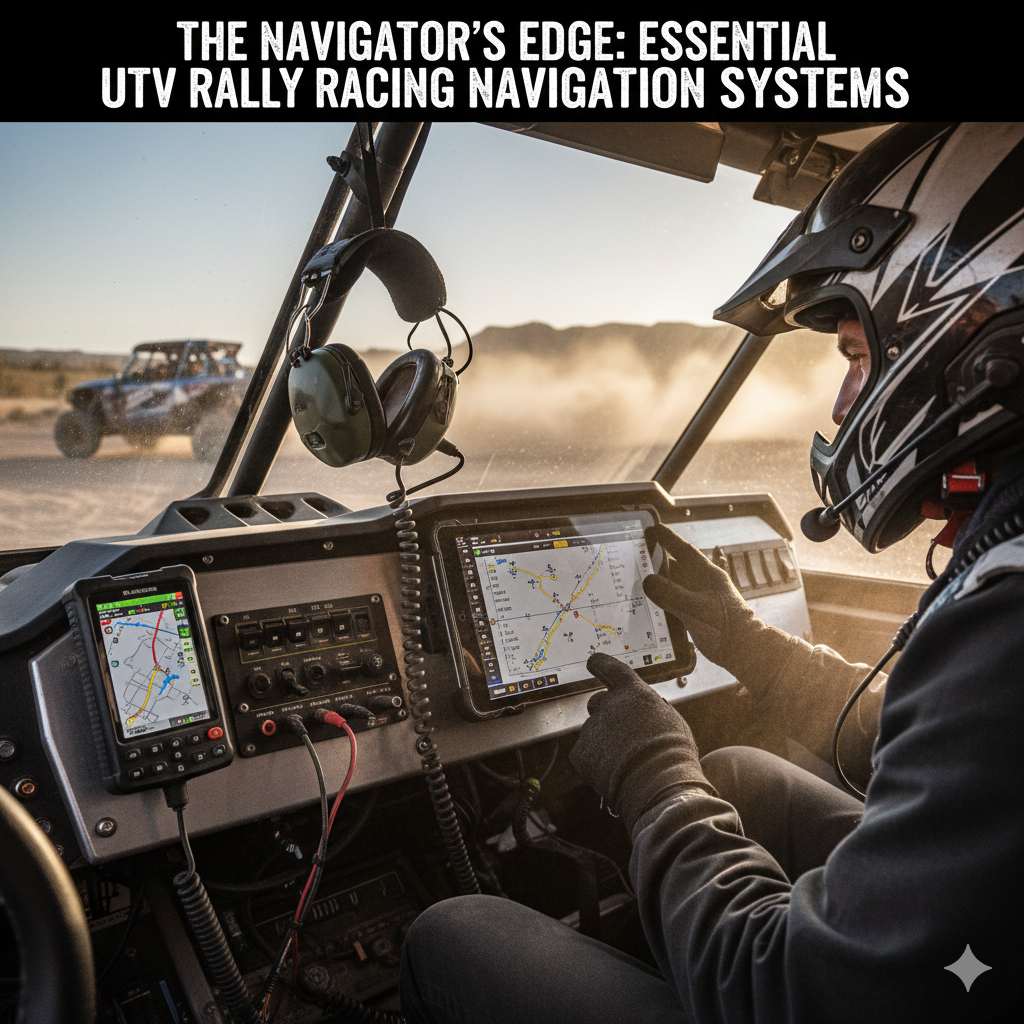Ever wondered why your UTV sometimes feels a bit off-kilter on a sharp turn, or struggles for traction on a steep incline?
The answer often lies in something you might not even consider:
weight distribution.
It’s the silent architect behind your UTV’s handling, stability, and overall performance.
In the thrilling world of off-roading, where terrains are unpredictable and challenges abound, understanding and optimizing how weight is distributed within your Utility Terrain Vehicle isn’t just a technical detail
—it’s a fundamental aspect of safety, control, and maximizing your adventure.
Many riders focus on horsepower, tire upgrades, or suspension lifts, but overlook the profound impact of weight.
Whether you’re navigating rocky trails, speeding across dunes, or hauling gear for a weekend trip,
the way your UTV’s weight is balanced (or unbalanced) dictates everything from tire wear to rollover risk.
This guide will take you on a deep dive into the nuances of UTV weight distribution, equipping you with the knowledge and practical strategies to transform your ride from good to exceptional.

Understanding Weight Transfer: Dynamic vs. Static
To truly master weight distribution, we first need to differentiate between two crucial concepts: dynamic weight transfer and static weight distribution.
Dynamic Weight Transfer: The Art of Motion
Dynamic weight transfer refers to the continuous shifting of weight within your UTV as it moves.
This happens every time you accelerate, brake, or turn.
It’s an inevitable force, but one that can be managed and even leveraged for better control [1].
Acceleration: When you hit the throttle, weight shifts towards the rear of the vehicle.
This can increase traction on the rear wheels but lighten the front, potentially leading to understeer.
Braking: Applying the brakes causes weight to surge forward, increasing grip on the front wheels but reducing it on the rear.
This can be crucial for effective stopping but can also lead to rear-wheel lock-up or instability if not managed smoothly.
Cornering: As you turn, centrifugal force pushes weight towards the outside of the turn.
This can compress the outer suspension and lift the inner wheels, impacting stability and traction.
Ignoring dynamic weight transfer can lead to several issues, including uneven tire wear, difficulty cornering, and reduced traction on slopes [1].
For instance, if you notice one side of your tires wearing faster, it could be a sign of consistent, unbalanced weight transfer during turns.
Static Weight Distribution: The Foundation of Balance
Static weight distribution, on the other hand, refers to how the fixed weight of your UTV, its cargo, and passengers are arranged when the vehicle is stationary.
This includes the placement of accessories, tools, spare tires, and even the passengers themselves.
A well-thought-out static distribution provides a stable foundation for dynamic maneuvers.

The Impact of Improper Weight Distribution
An unbalanced UTV is not just uncomfortable to ride; it’s a safety hazard and a performance killer.
Here’s how poor weight distribution can negatively affect your off-road experience:
Compromised Handling and Control: An improperly balanced UTV can feel unpredictable.
It might understeer (push wide in turns) or oversteer (the rear slides out), making precise navigation difficult and increasing the risk of accidents [1].
Increased Rollover Risk: UTVs inherently have a higher center of gravity than many other vehicles, making them prone to rollovers, especially on uneven terrain or during aggressive maneuvers.
Poor weight distribution exacerbates this risk, particularly if heavy items are placed too high or to one side [2].
Accelerated Wear and Tear: Uneven loading puts undue stress on specific components.
This can lead to premature wear of tires, suspension components, and even the chassis, costing you time and money in repairs [1].
Reduced Braking Efficiency: If too much weight is shifted forward during braking, the rear wheels can lose traction, leading to longer stopping distances and a loss of control.
Conversely, too much rear weight can make the front end light, reducing steering authority during braking.
Fatigue and Discomfort: Constantly fighting an unbalanced vehicle can be physically draining, leading to rider fatigue and diminishing the enjoyment of your off-road adventure.
Key Techniques for Managing Dynamic Weight Transfer
Mastering the dynamic aspects of weight transfer is largely about refining your riding technique and understanding your UTV’s responses.
Here are critical elements to consider:
1. Body Positioning: This is perhaps the most immediate and effective way to influence dynamic weight transfer.
Lean into turns, shift your body weight to counteract forces, and adjust your center of gravity.
This stabilizes the vehicle, improves traction, and gives you a more intuitive feel for the terrain [1].
Think of it like riding a motorcycle – your body is an integral part of the machine’s balance.
2. Suspension Setup: Your UTV’s suspension is designed to absorb impacts and maintain tire contact with the ground.
Properly tuned shocks and springs are central to optimal weight distribution.
Adjusting rebound and compression settings ensures your UTV remains level and predictable through corners and over rough terrain [1].
This might involve consulting your UTV’s manual or a professional for specific adjustments based on your riding style and typical load.
3. Throttle Control: Smooth, consistent throttle application is key.
Sudden bursts of acceleration can abruptly shift weight rearward, unsettling the UTV.
Gently easing into the throttle allows for a more settled ride, maintaining better balance and control [1].
This is especially important when climbing or traversing loose surfaces.
4. Brake Modulation: Similar to throttle control, abrupt braking sends weight violently forward, reducing rear-wheel grip and potentially causing skidding.
Gentle, controlled braking promotes a balanced weight transition, helping you maintain steering control and stop more effectively [1].
Practice progressive braking to feel how your UTV responds.

Optimizing Static Weight Distribution: Cargo and Accessories
Beyond your riding technique, how you load your UTV with cargo and accessories plays a monumental role in its static weight distribution and, consequently, its overall performance.
Every item you add contributes to the total weight and influences the center of gravity.
Strategic Cargo Placement
When loading your UTV, remember the mantra: low and centered [1].
Heaviest Items First: Place the heaviest items on the floor of the cargo bed or within the cabin, as close to the center of the UTV as possible.
This keeps the center of gravity low, reducing the risk of rollovers.
Evenly Distributed: Distribute weight evenly from side to side.
Avoid piling all heavy gear on one side, which can cause leaning and affect handling, especially on cambered trails.
Front-to-Rear Balance: While the
general rule for towing a UTV on a trailer is to have 60% of the weight towards the front of the trailer [3, 4], for the UTV itself, aim for a balanced front-to-rear distribution.
Too much weight at the very rear can lighten the front steering, while too much at the front can overload the front suspension and reduce rear traction.
Secure Everything: Loose cargo can shift during dynamic maneuvers, suddenly altering your UTV’s balance and creating dangerous situations.
Use tie-downs, cargo nets, and secure storage solutions to ensure everything stays in place, even over the roughest terrain [5].
The Impact of Accessories
Every accessory you add to your UTV, from winches and bumpers to roof racks and sound systems, adds weight.
It’s crucial to consider the weight implications of these additions:
Weight Accumulation: Small additions can quickly add up. A winch, upgraded tires, or a roll cage all have weight implications that can alter your UTV’s center of gravity and overall performance [6].
Placement Matters: When installing accessories, consider their placement.
Heavy items mounted high (like a roof rack with a spare tire) will raise your UTV’s center of gravity, increasing rollover risk.
Opt for lower, more central mounting points whenever possible.
Suspension Adjustments: After adding significant weight through accessories or cargo, you might need to adjust your suspension settings to compensate.
This could involve increasing spring preload or adjusting damping to maintain proper ride height and handling characteristics.
Practical Steps to Optimize Your UTV’s Weight Distribution
Now that we understand the theory, let’s put it into practice. Here are actionable steps you can take to optimize your UTV’s weight distribution:
1. Assess Your Current Setup: Before making any changes, understand your UTV’s baseline. What accessories do you have?
How do you typically load it for rides? Pay attention to how it feels on different terrains.
2. Weigh Your UTV (Optional but Recommended): For serious optimization, consider weighing your UTV with and without typical cargo and passengers.
You can use individual wheel scales or even a bathroom scale under a piece of wood for tongue weight if trailering [7].
This gives you concrete data to work with.
3. Strategic Loading Plan: Develop a loading strategy.
Always load the heaviest items first, low and centered.
Distribute gear evenly from side to side. If you frequently carry specific items, designate permanent spots for them.
4. Invest in Smart Storage Solutions: Utilize cargo boxes, storage bags, and organizers that fit snugly within your UTV.
Bed-mounted cargo boxes offer significant storage and help keep weight low and contained [8, 9].
Door bags and seat-back organizers can help distribute smaller items.
5. Tune Your Suspension: Learn about your UTV’s suspension adjustments.
Experiment with rebound and compression settings to find what works best for your typical load and riding style.
If you’re unsure, consult a professional or your UTV’s manual.
6. Practice Riding Techniques: Continuously refine your body positioning, throttle control, and braking modulation.
Practice in a low-risk environment first, gradually increasing the challenge as you become more comfortable [1].
The more you practice, the more intuitive these techniques will become.
7. Regular Maintenance: Regularly inspect your tires for uneven wear, check tire pressure, and ensure all suspension components are in good working order.
Proper maintenance is foundational to predictable handling [1].

The Benefits of a Balanced Ride
Optimizing your UTV’s weight distribution offers a multitude of benefits that will enhance every aspect of your off-road adventures:
Enhanced Safety: Reduced rollover risk, improved stability, and better control directly translate to a safer riding experience for you and your passengers.
Superior Handling: Your UTV will respond more predictably to steering inputs, making it easier to navigate challenging trails and enjoy a more fluid ride.
Increased Traction: Proper weight distribution ensures that all tires maintain optimal contact with the ground, leading to better traction for climbing, descending, and accelerating.
Extended Component Lifespan: By minimizing undue stress on tires, suspension, and chassis, you’ll reduce premature wear and tear, saving on maintenance and replacement costs.
Greater Comfort and Confidence: A balanced UTV is simply more comfortable to ride.
This, combined with the increased control, boosts your confidence, allowing you to tackle more challenging terrain and fully immerse yourself in the adventure.
Conclusion: Ride Smarter, Not Just Harder
In the world of UTVs, brute force and raw power are often celebrated, but true mastery comes from understanding the subtle forces at play.
Weight distribution optimization is not about making your UTV faster or more powerful in a conventional sense; it’s about making it more efficient, safer, and ultimately, more enjoyable to ride.
By paying attention to both dynamic weight transfer through your riding techniques and static weight distribution through smart cargo and accessory management, you unlock a new level of control and confidence.
So, the next time you hit the trails, remember that every item you pack, every accessory you install, and every move you make influences your UTV’s balance.
Take the time to understand these principles, apply the techniques, and you’ll discover a smoother, safer, and far more exhilarating off-road experience. Happy trails!
References
[1] Side by Side Fury. “UTV Weight Transfer: Master Handling & Control.” *Side by Side Fury, [
[2] iCASH. “Off-Road Vehicle (ORV) Safety.” *The University of Iowa*, [
[3] Ken Feagin Truck & Trailer. “How to Trailer Your UTV (Do’s and Don’ts).” *Ken Feagin Truck & Trailer*, []().
[4] Waynesville Cycle. “How To Haul Your UTV.” *Waynesville Cycle*,
[5] Polaris. “How to Properly Load and Haul Your UTV.” *Polaris Off-Road*, [
[6] DRT Motorsports. “10 Things To Consider Before Modifying Your SXS.” *DRT Motorsports Blog*,
[7] Polaris ATV Forums. “Weight distribution and trailering.” *Polaris ATV Forums*, [
[8] Rad UTV Parts. “Ultimate Guide to Buying UTV Cargo Boxes.” *Rad UTV Parts Blog*, []().
[9] Side by Side Fury. “Maximize UTV Utility With Top Storage Solutions.” *Side by Side Fury*,



